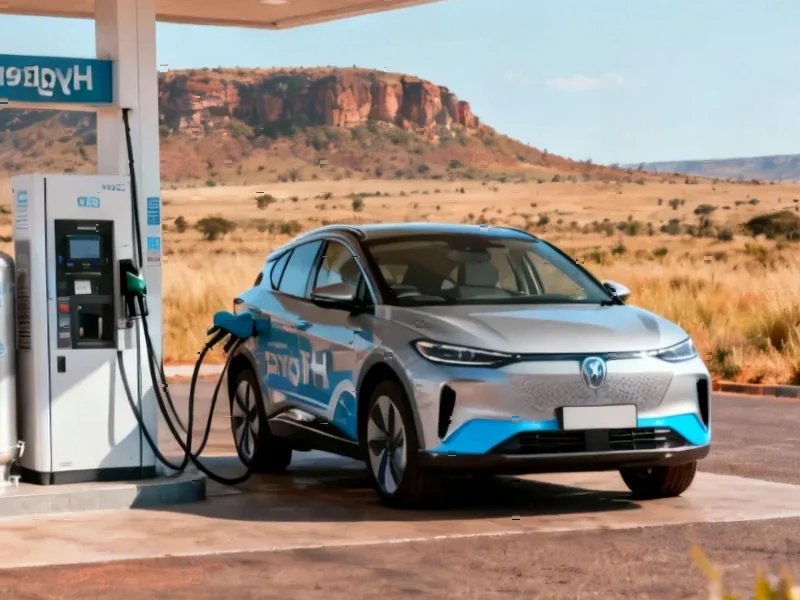According to Utility Dive, fuel cell manufacturer Bloom Energy announced it’s on track to double its annual production capacity to reach 2 GW by the end of 2026, driven by surging demand from artificial intelligence data centers. CEO KR Sridhar described this as a “once-in-a-generation opportunity” during Tuesday’s earnings call, highlighting that the company has deployed about 1.4 GW of its energy systems across more than 1,000 locations globally. The company revealed strategic partnerships including a $5 billion agreement with Brookfield Asset Management and deployments with major tech companies including Oracle, Amazon Web Services through AEP, Equinix, and CoreWeave. Sridhar emphasized that Bloom’s fuel cells use 15%-20% less fuel than combustion turbines and have achieved double-digit cost reductions annually for over a decade, positioning them competitively beyond traditional high-price electricity markets like California. This aggressive expansion comes as the company targets what it sees as a fundamental shift toward on-site power generation for data centers.
Table of Contents
The AI Energy Crisis Driving Demand
The explosive growth of artificial intelligence represents what may be the largest single driver of electricity demand since the electrification of industry. Modern AI models require staggering amounts of power—some estimates suggest a single ChatGPT query consumes 10 times more electricity than a Google search. As companies race to build AI infrastructure, traditional power grids simply cannot keep pace with the timeline or scale required. The fundamental challenge isn’t just generating more electricity, but delivering it reliably to specific locations where data centers are being built, often in areas with constrained grid capacity. This creates a perfect storm where companies building AI infrastructure face multi-year waits for grid connections or must accept unreliable power that could interrupt critical computing operations.
Why Fuel Cells Fit the AI Power Profile
Bloom’s solid oxide fuel cell technology offers several unique advantages for AI data centers that traditional power sources struggle to match. Unlike solar or wind, fuel cells provide consistent baseload power 24/7 regardless of weather conditions. Compared to diesel generators, they offer higher efficiency and lower emissions. Most importantly for data center operators, fuel cells can be deployed rapidly at scale directly at the point of use, bypassing grid interconnection delays that can stall multi-billion dollar AI projects for years. The technology’s fuel-agnostic design provides future-proofing—while currently running primarily on natural gas, the same infrastructure could transition to green hydrogen as that supply chain matures, addressing growing environmental concerns about AI’s carbon footprint.
The Emerging On-Site Power Battle
While Bloom is positioning itself as a leader in this space, they’re far from alone in recognizing the opportunity. Traditional generator manufacturers, battery storage companies, and even nuclear microreactor startups are all targeting the same data center power market. The critical differentiator will be which technology can deliver the optimal combination of reliability, cost, scalability, and environmental compliance. Bloom’s claimed 15-20% efficiency advantage over combustion turbines is significant, but battery storage paired with renewables offers zero-emission operation, and nuclear provides unparalleled energy density. The market is likely large enough to support multiple winners, but Bloom’s first-mover advantage with major hyperscalers gives them a substantial head start in establishing industry standards.
The Scaling Challenge Ahead
Doubling production capacity to 2 GW annually by 2026 represents an ambitious timeline that carries significant execution risk. Manufacturing complex fuel cell systems at this scale requires securing supply chains for specialized materials, expanding factory capacity, and maintaining quality control through rapid growth. The company’s latest financial report shows increased R&D spending, which suggests they’re investing in both product improvement and manufacturing innovation. However, the data center industry’s breakneck pace means any delays in Bloom’s expansion could see customers turning to competitors. The company’s partnership with Brookfield provides not just capital but also access to a global portfolio of infrastructure projects, potentially derisking the scaling challenge through established construction and development expertise.
Transforming Electricity Generation Beyond Data Centers
The implications of Bloom’s strategy extend far beyond powering AI. If successful, their approach could fundamentally reshape how we think about electricity generation for commercial and industrial applications more broadly. The traditional centralized power grid model is showing its limitations in an era of climate change-induced disruptions and skyrocketing demand from digitalization. On-site generation provides resilience against grid failures, avoids transmission losses, and can be optimized for specific use cases. As costs continue to decline—Bloom claims double-digit annual reductions for over a decade—the economic case for distributed generation becomes compelling even without considering reliability benefits. We may be witnessing the early stages of a transition toward more modular, flexible power systems that complement rather than replace the traditional grid.
The Road to 2026 and Beyond
Bloom’s success will depend on executing their capacity expansion while continuing to drive down costs and improve performance. The $5 billion Brookfield partnership represents a vote of confidence, but the real test will come as they attempt to scale manufacturing while maintaining product reliability. The company’s “lighthouse account” strategy—landing marquee customers to establish credibility—has worked in telecommunications, but the data center market operates at a different scale and with higher reliability requirements. If Bloom can deliver on their promises, they could become the default power solution for a significant portion of the AI infrastructure buildout. If they stumble, the window of opportunity may close as competitors mature and grid infrastructure eventually catches up with demand. Either way, their ambitious bet highlights how the AI revolution is forcing innovation across multiple industries, including the fundamental business of keeping the lights on.



